Check out this article from the recording revolution.com by Graham for today’s daily audiophile roundup. Have you ever tried a mono drum? It’s likely you have had some issues recording sound from your drum kit since there are many different sounds to record. However, it is very important to capture the power and realism of the drums as an instrument. A mono drum overhead microphone may be just the solution. There are some advantages to using a mono drum microphone. These advantages may include no phasing issues, usage of just one microphone, and allowing the sound to be more focused. This blog updated on 12/11/19 to reflect changes in knowledge and experience.
Recording Revolution: https://www.recordingrevolution.com/
The positioning of the mono overhead mics is critical in any drum room. The overhead mics are responsible for the room sound in the drum mix. The position of mono drum overhead mics is critical if you are going to achieve a large drum room sound. The ceiling height and the position of mono overhead mics must be taken into consideration. Stay away from 8′ ceiling heights.
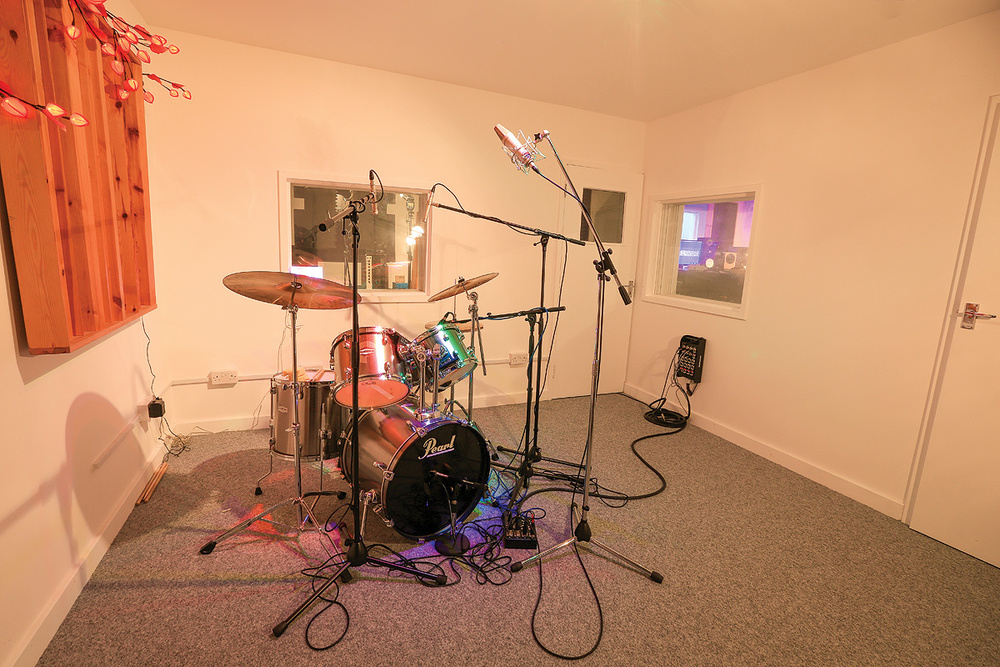
Drum Set-Up with Mono Overhead Mic
Mono Overhead Mics
Mono overhead mics must be far enough away from the drums but also far enough away from the ceiling. If the mono overhead mics are too close to the drums we have unwanted pressure issues. If the mono overhead mics are too close to the ceiling, the reflections from the ceiling strike the microphone along with the drum sound. This mixing of the reflections with the drum sound produces a drum sound that lacks quality and sounds small.
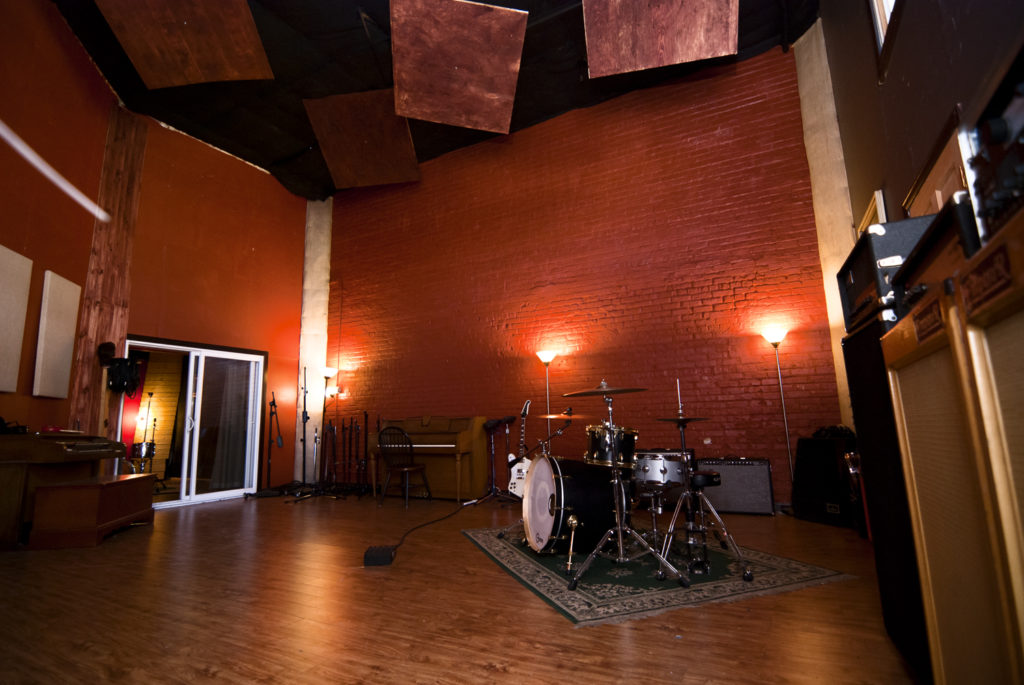
Live Room for Drums
To achieve a large room sound with the proper drum tones, you must have at least a 13′ ceiling height. This will allow for proper position mono mic overheads. This positioning can be far enough away from the drums and ceiling to allow for both the drum sound to come through and enough of the room sound (ceiling reflections) to enter the mix to produce a larger drum sound with more tonal variations.
Low-Frequency Management
Drums are full energy range producing instruments. They produce large amounts of full-range sound energy. The kick drum alone can produce energy down to 40 Hz. Most of these low-frequency kick energy will not fit into our smaller rooms. To assist with absorbing this energy we have created our drum platform with our carbon technology. Inside our drum platform is our ACDA-12 technology absorbing from 30 – 50 Hz. Absorbing low-frequency energy as close to the source of that energy is always welcome. Once the energy gets out into the room domain, it becomes the property of the room and all the room’s distortions.
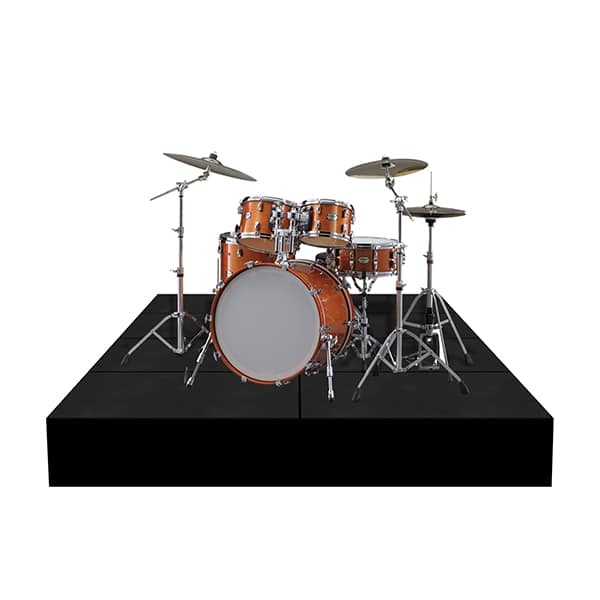
Acoustic Fields Carbon Drum Platform
Carbon Platform
Our Drum Platform elevates which smooths our room response. It also isolates the drums from floor contact which will reduce noise transmission from the drums to the floor and through the floor. Our Drum Platform also attenuates or absorbs energy close to the source. This three-way attack on the excess low-frequency drum energy output into our small rooms is always welcome.
Drum Platform: https://www.acousticfields.com/product/drum-platform/
Learn More About Us At Acoustic Fields: https://www.acousticfields.com/about/
In Summary
I hope today’s discussion helps solve the problem you are having. Please message me at info@acousticfields.com if you have any questions as I am always happy to help. If you want more to learn more about room acoustics please sign up for our free acoustic video training series and ebook. Upon sign up you will instantly have access to a series of videos and training to help improve the sound in your studio, listening room or home theatre.


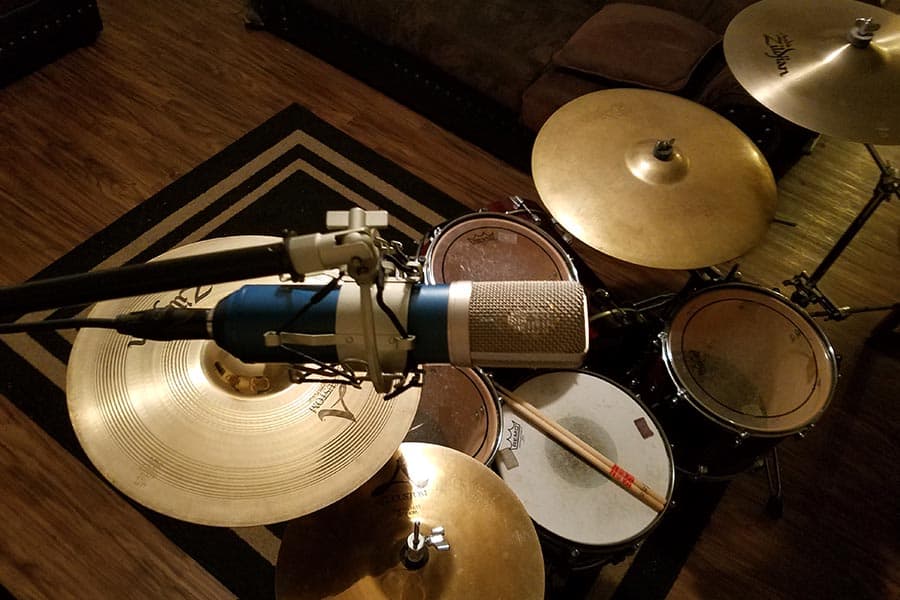


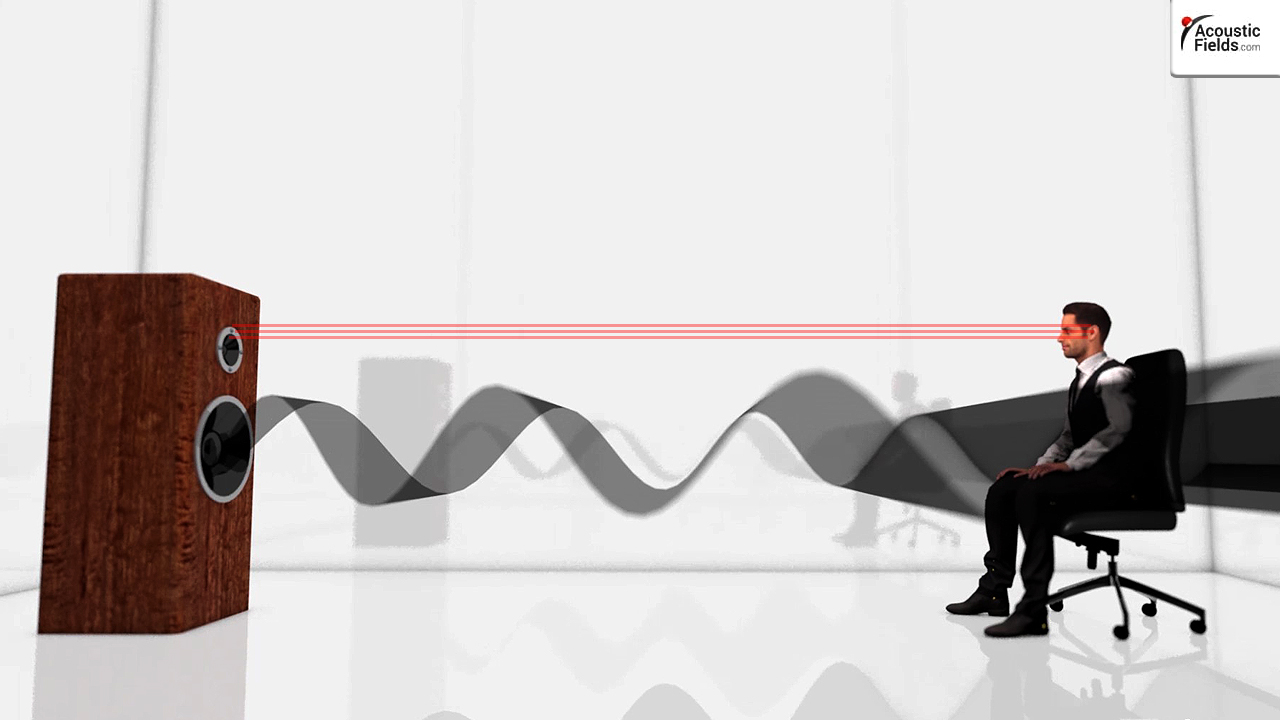
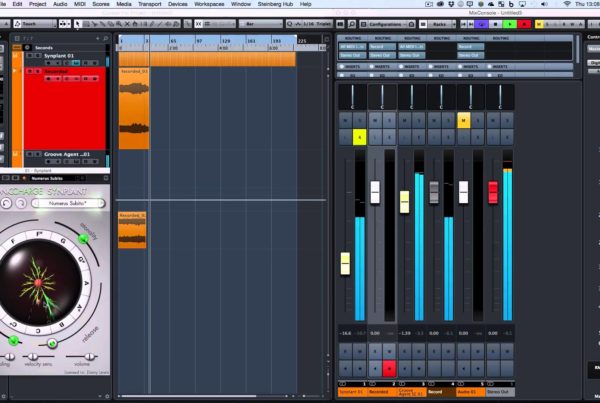


If the mono mic is the “overhead” what do you call the other two condenser mics placed overhead?